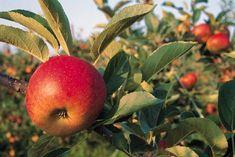
The UK apple forecast for 2011-12 is five per cent up on its three-year average at 219,000 tonnes, reflecting the buy-British trend and bringing export opportunities for the second year running.
German research and analysis company AMI’s head of horticulture Helwig Schwartau told delegates at this year’s Prognosfruit conference in Slovenia that the UK could be looking at export opportunities.
Although the 2011-12 EU27 crop is expected to be five per cent higher than last season, it is still five per cent below the previous three year average.
In general, the apple outlook is in good shape. Schwartau said: “Last year, there were too many apples and then too few and the price fluctuated accordingly. This year could be extremely difficult, but it could be a good season. We need to play the market. It’s a good start, as we have never had as little stock as we do now. It’s 80,000t less than last year and an excellent starting point. We will have enough volume, but there won’t be a shortage. Happily, there are a lot of early harvests predicted - another good starting point.”
Poland is the highest producing country with a predicted harvest of 2.3 million tonnes, although still 10 per cent down on its three-year average.
French predicted production stands at 1.65mt, four per cent up on average. Italy remains in the number-two spot after Poland, at 2.21mt, a one per cent increase on the three-year average. Germany is set to produce 896,000t, which is a nine per cent decrease on the last three seasons.
Greece (245,000t predicted), Hungary (300,000t) and Romania (375,000t) are down by four per cent, 39 per cent and 11 per cent respectively on their 2010-11 production and may need to important significant volumes.
English Apples & Pears CEO Adrian Barlow told FPJ in Slovenia: “There’s a huge demand for UK apples, with Sainsbury’s and Tesco competing for the number-one spot for sales. There has been a tremendous performance on the market over the last four to five years.
“[Home] supply to the UK market stood at 24 per cent in 2003 and it is now 37 per cent. It’s been a dramatic increase and in 10 years I think we could increase this by a third again... There is a great opportunity to export to Europe. But it is a question of balance.”



